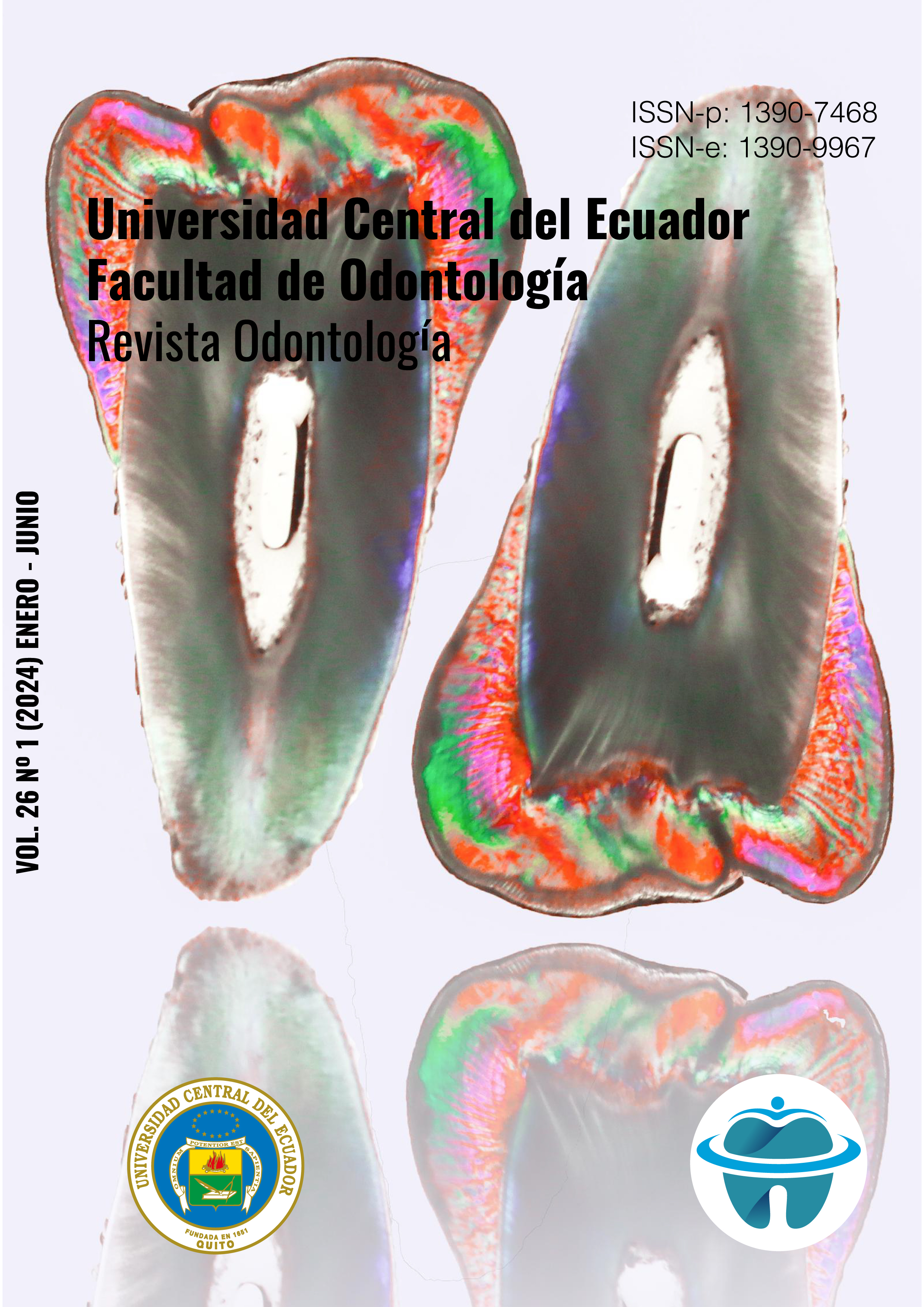Lotka's law in a sample of dental teachers: implications and recommendations
DOI:
https://doi.org/10.29166/odontologia.vol26.n1.2024-e4553Keywords:
scientific publication indicators, teachers, dentistry, program for incentives and benefitsAbstract
Introduction: Production of scientific manuscripts is one of the mission tasks of university professors. For reasons of training, motivation, incentives, or personal disinterest, some become more productive than others. Objective: To determine if the production of full-time professors in the dentistry program of a public university in Colombia follows Lotka's law. Methodology: The publications of each professor on the CVLAC-Scieti Col site were collected and counted. The behavior of the publications per professor was analyzed and compared with what was expected by Lotka's law. Results: Even though the professors' production did not follow Lotka's law, close to 60% of the historical production is concentrated in only 2 professors, one from the basic area (40% of the products) and one from the clinical area (remaining 22%). Conclusion: It is necessary to improve the research training of teachers, especially those in the clinical area, encompassing scientific writing activities. Likewise, it may be important to create focus groups with experienced teachers who, free from prejudice, strengthen the skills of beginners.
Downloads
References
Concepción-Gonzalez V, Ramos H. Publicaciones científicas de los profesores de la Facultad de Medicina de Villa Clara (2011-2013). 2015;7(1):106-19.
Matheus-Rodríguez H. Productividad científica de los profesores universitarios de enfermería. Rev REDINE. 2017;9(1):45-53.
Ávila M, Bermello R, Mesa M. Estudio bibliométrico de la Revista de Ciencias Médicas de La Habana en el período 2005-2009. Acimed. 2012;23(4):380-90.
Gallegos Becerra HA, Rodriguez-Morales AJ. La publicación científica y sus paradigmas. Sci Tech. 2013;18(3):1-3.
Torelló ÒM. El Profesor Universitario: Sus Competencias Y Formación. Profesorado Rev Currículum y Form Profr. 2011;15(3):195-211.
Borja Bedoya E, Insuasty Rodriguez A. Del prestigio al indicador. El Ágora USB. 2019;19(1):12-27. Doi: https://www.doi.org/10.21500/16578031.4118
Cáceres-Ruiz Díaz M. Productividad científica de los investigadores categorizados del área de Ciencias Médicas y de la Salud: aplicación del modelo matemático de Lotka. Memorias del Inst Investig en Ciencias la Salud. 2019;17(2):44-55. Doi: https://www.doi.org/10.18004/mem.iics/1812-9528/2019.017.02.44-055
Kawamura, C. D. L. Thomas, Y. Kawag M. Lotka’s law and the pattern of scientific productivity in the dental science literature. Med Inform Internet Med. 1999;24(4):309-15. Doi: https://www.doi.org/10.1080/146392399298320
Vargas Bolaños R, Madrigal Vargas Y. Analisis de consumo de información en los artículos publicados en la Revista Electrónica “Actualidades Investigativas en Educación” (2001-2005). Actual Investig en Educ. 2011;7(3). Doi: https://www.doi.org/10.15517/aie.v7i3.9286
Romero-Cárdenas Á. Rendición de Cuentas - Facultad de Ciencias de la Salud [Internet]. 2021 [citado 2022 nov 22];78.
Kawamura M, Thomas CDL, Tsurumoto A, Sasahara H, Kawaguchi Y. Lotka’s law and productivity index of authors in a scientific journal. J Oral Sci. 2000;42(2):75-8. Doi: https://www.doi.org/10.2334/josnusd.42.75
Published
How to Cite
Issue
Section
License
Copyright (c) 2024 Midian Clara Castillo-Pedraza, Jorge Homero Wilches-Visbal, Diana Luz Escobar-Ospino

This work is licensed under a Creative Commons Attribution-NonCommercial-NoDerivatives 4.0 International License.


